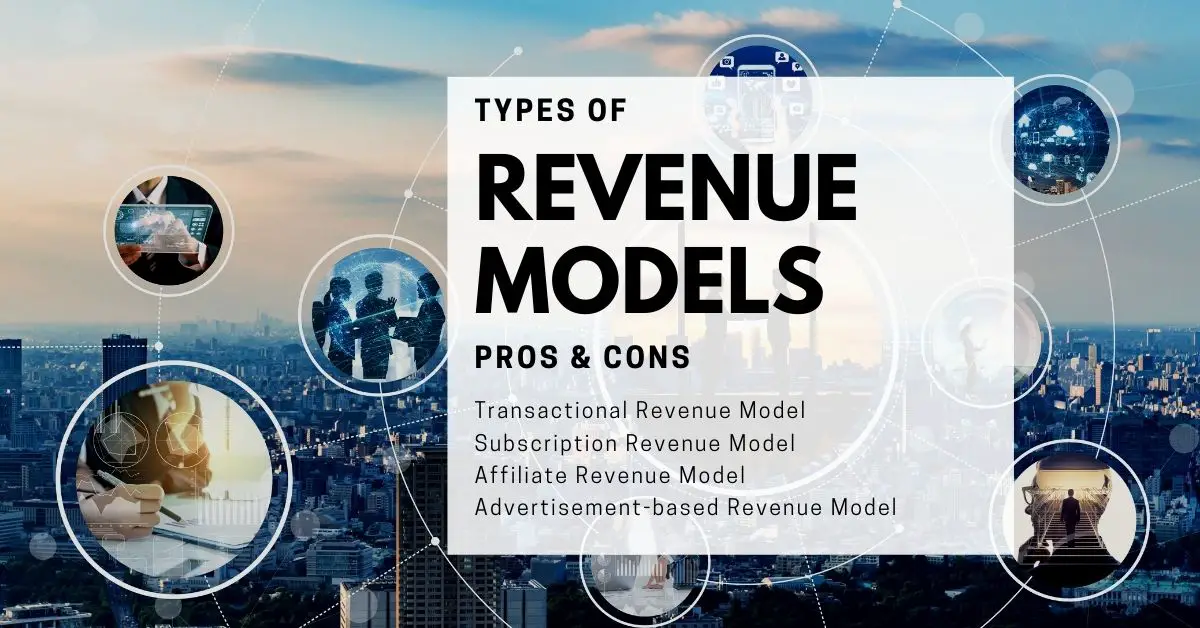
As a rookie entrepreneur or startup beginner, there are a lot of terms you need to know and understand, and of course one of them is the “revenue model”. Many startups started their business too soon without even knowing the way of making money out of it. They think they will eventually figure it out when things proceed, however, it is proven in many cases, people tend to fail and companies close down after just a few months when they don’t have a good idea on how to make money. This article will highlight some popular revenue models and the pro and cons of each of them.
What is a revenue model?
A revenue model is a framework that defines the income generation method of a company. It is a critical part of the business model and helps to manage the company revenue streams and resources required for each revenue stream.
You will need to define your company’s revenue model upfront so that your team knows the process of how the company makes money and work together to make it successful. The revenue model specifies how you will charge your customers for the products/services that you provide.
Proper research on your existing competitors in the market is important in order to find the optimum revenue model for your business. It depends on the trend of the market, sometimes you want to try out a different revenue model rather than following your competitors.
Types of Revenue Models
There are many different types of revenue models in the market and here are some of the most popular ones that you can compare and consider for your business, including the transaction-based revenue model, subscription revenue model, affiliate revenue model, and advertisement-based revenue model.
Transaction-based Revenue Model
The transaction-based revenue model is one of the most common revenue models you see from the market. Transaction-based revenue models are based on the sales of goods or services to customers. The customer can be either a company (B2B) or a consumer (B2C). The company controls the price of the product/service by looking into the production cost and margin. All companies that make money by selling products/services are categorized in this transaction-based revenue model. Examples of businesses that utilize the transaction-based revenue model include e-commerce stores that sell products online, a saloon that provides haircut service, fast-food restaurants, and many more.
Pros: Full control over the pricing strategy which impacts the revenue of the company.
Cons: Need a consistent source of products/services, marketing, and selling because you only make money when there is a sale.
Subscription Revenue Model
The subscription revenue model is a type of recurring revenue model whereby customers can opt-in to pay for products/services for a longer period of time, usually every month or year. The subscription model enables a continuous, recurring income for the company. The subscription revenue model is one of the best revenue models where you can sell “future” products or services and enables the business to obtain a more predictable income for the upcoming period. Example businesses that practice subscription revenue model include WordPress Page Builder Divi that offers annual licenses subscription plans, hosting companies like Serverfreak that offer annual hosting plans and your internet provider.
Pros: Recurring revenue for the company, more predictable income for the longer term.
Cons: Marketing work and customer service need to be in tip-top condition to earn trust from customers.
Affiliate Revenue Model
The affiliate revenue model is very similar to the commission revenue model where the business receives its commission by promoting another company’s products or services and generating sales. The only difference is that the affiliate revenue model receives its commission from the seller rather than the buyers. The affiliate model usually starts with a contract between the supplier of the product/services and the promoter. In this affiliate revenue model, you can promote the products or services using various methods including social media, blogging, referral code, and more, obeying the terms and conditions on the affiliate contract. The most obvious examples of businesses that utilize affiliate revenue models are influencers and blogging companies.
Pros: Do not require to own a product or service. Usually pays better than Ads.
Cons: Has no control over the product or services offered by the other company. Require higher traffic for higher volumes of converted sales.
Advertisement-based Revenue Model
The ad-based revenue model is one of the simplest revenue models where you place ads on your media (online or offline) and earn money when people view or click on the advertisements. The ad-based revenue model usually works well with a bigger volume of audiences because ads usually have a lower click-through rate or conversion rate. If you have a website with a larger audience, you can easily register for an ads account with Google AdSense where you can earn somewhere from $4-10 per 1,000 page views.
Pros: Easiest to set up. Do not require products or cost upfront.
Cons: Require high traffic in order to make a living with. Not all industries or niches have high CPM.
Pay-what-you-want Revenue Model
The pay-what-you-want revenue model or donation-based revenue model generates income from customers on a voluntary basis. The revenue model is very close to the “no-revenue” model but the difference is that the pay-what-you-want revenue model always actively seeking donations or pennies for a cup of coffee. The value of the business is to offer products or services for free by default and the revenue is only depending on customer liking. The pay-what-you-want business is different from a charity organization because you will still need to pay taxes. This revenue model is often used as a secondary source of income on top of other revenue models.
Pros: Free access to quality products or services will gain high popularity and thus donations could contribute a lot to the company’s revenue.
Cons: Revenue is unpredictable.

